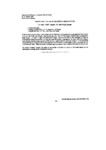Por favor, use este identificador para citar o enlazar este ítem:
http://www.alice.cnptia.embrapa.br/alice/handle/doc/12034Registro completo de metadatos
| Campo DC | Valor | Lengua/Idioma |
|---|---|---|
| dc.contributor.author | LIMA, L. P. | pt_BR |
| dc.contributor.author | CAPALBO, D. M. F. | pt_BR |
| dc.contributor.author | MELO, I. S. de | pt_BR |
| dc.contributor.author | MORAES, I. O. | pt_BR |
| dc.date.accessioned | 2017-02-16T22:45:00Z | - |
| dc.date.available | 2017-02-16T22:45:00Z | - |
| dc.date.created | 1994-06-29 | pt_BR |
| dc.date.issued | 1994 | pt_BR |
| dc.identifier.citation | In: INTERNATIONAL MEETING ON CASSAVA FLOUR AND STARCH, 1994, Cali. Abstracts. Cali: CIAT, 1994. | pt_BR |
| dc.identifier.uri | http://www.alice.cnptia.embrapa.br/alice/handle/doc/12034 | pt_BR |
| dc.description | In the search for an alternative to the intensive use of fungicides in crop production, a soil bacterium was isolated in Guaira, Sao Paulo State (Brazil). This Bacillus gave good control of the fungus Fusarium solani, an important plant disease. In order to apply this bacterium in larger experimental areas, it was necessary to study its production by liquid fermentation on cheap agroindustrial residues. Manipueira (the waste water from cassava flour industry) was the main component of the medium, supplemented by sugarcane molasses. It was inoculated with the Bacillus sp. (isolated from Guaira soil) and incubated under constant agitation and temperatura in 250 ml Erlenmeyer flasks. Bacterial growth, pH and sugar consumption were analyzed over 48 h of fermentation. The results obtained indicated the ability of the residue to support the growth of the strain tested and the importance of scaling up the fermentation process. | pt_BR |
| dc.language.iso | eng | eng |
| dc.rights | openAccess | eng |
| dc.subject | Biofungicide | pt_BR |
| dc.subject | Fungus | pt_BR |
| dc.subject | Residues | pt_BR |
| dc.subject | Plant | pt_BR |
| dc.subject | Disease | pt_BR |
| dc.subject | Control | pt_BR |
| dc.subject | Biofungicida | pt_BR |
| dc.subject | Bacillus thuringienesis | pt_BR |
| dc.subject | Controle | pt_BR |
| dc.subject | Guaíra | pt_BR |
| dc.subject | São Paulo | pt_BR |
| dc.title | Manipueira: its use in obtaining a biofungicide. | pt_BR |
| dc.type | Resumo em anais e proceedings | pt_BR |
| dc.date.updated | 2017-02-16T22:45:00Z | pt_BR |
| dc.subject.thesagro | Bactéria | pt_BR |
| dc.subject.thesagro | Mandioca | pt_BR |
| dc.subject.thesagro | Manipueira | pt_BR |
| dc.subject.thesagro | Doença | pt_BR |
| dc.subject.thesagro | Fungo | pt_BR |
| dc.subject.thesagro | Fusarium Solani | pt_BR |
| dc.subject.thesagro | Planta | pt_BR |
| dc.subject.thesagro | Resíduo | pt_BR |
| dc.subject.thesagro | Solo | pt_BR |
| dc.subject.nalthesaurus | Manihot | pt_BR |
| dc.subject.nalthesaurus | cassava | pt_BR |
| dc.subject.nalthesaurus | soil | pt_BR |
| dc.format.extent2 | p.124 | pt_BR |
| riaa.ainfo.id | 12034 | pt_BR |
| riaa.ainfo.lastupdate | 2017-02-16 | pt_BR |
| dc.contributor.institution | CAPES; DEISE MARIA FONTANA CAPALBO, CNPMA; ITAMAR SOARES DE MELO, CNPMA; IRACEMA O. MORAES, UNESP. | pt_BR |
| Aparece en las colecciones: | Resumo em anais de congresso (CNPMA)  | |
Ficheros en este ítem:
| Fichero | Descripción | Tamaño | Formato | |
|---|---|---|---|---|
| 1994PL009CapalboManipueira2659.PDF | 517.76 kB | Adobe PDF |  Visualizar/Abrir |









